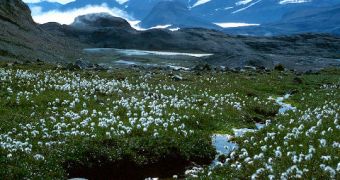As a result of climate change and global warming in particular, the Arctic tundra is faced with having to accommodate types of vegetation that up until now had no business there.
Thus, as a report published in the Nature Climate Change indicates, patches of forests are starting to grow in this part of the world.
Interestingly enough, the problem isn't that species of trees coming from other parts of the world are taking residence there. On the contrary: local shrubs are going through an extreme make-over and turning into trees themselves.
Unless you are a green-head, this piece of information may not be of a great deal of importance to you.
However, once you take into consideration the fact that the development of forests in the Arctic tundra is expected to “help” raise temperatures in this part of the world by an extra 1-2 degrees Celsius (33.8-35.6 degrees Fahrenheit) by the end of the 21st century, you might want to start paying more attention to this issue.
The reasons are quite simple: if Arctic temperatures go up, then glaciers will begin to melt even faster than they already do.
Now, there are two main reasons why we don't want these glaciers to melt: first of all, melted ice makes for higher sea levels, which in turn lead to floods and the like.
Secondly, as explained in a previous article, if glaciers melt and water temperatures around the world shoot up, some of our main industries will be heavily affected.
Turning back to beating around our Arctic bushes, it seems that throughout the past 30-40 years, the willow and alder plants from the northwestern Eurasian tundra have successfully grown well over 2 meters (about 6.5 feet) in height.
As enn.com reports, Bruce Forbes, a professor at the University of Lapland, Finland, explains that: “The speed and magnitude of the observed change is far greater than we expected.”
All in all, we find ourselves compelled to argue that such sudden changes in the world's vegetation need to be taken at face value and not downplayed, as such seemingly minor events typically indicate much greater problems.

 14 DAY TRIAL //
14 DAY TRIAL //